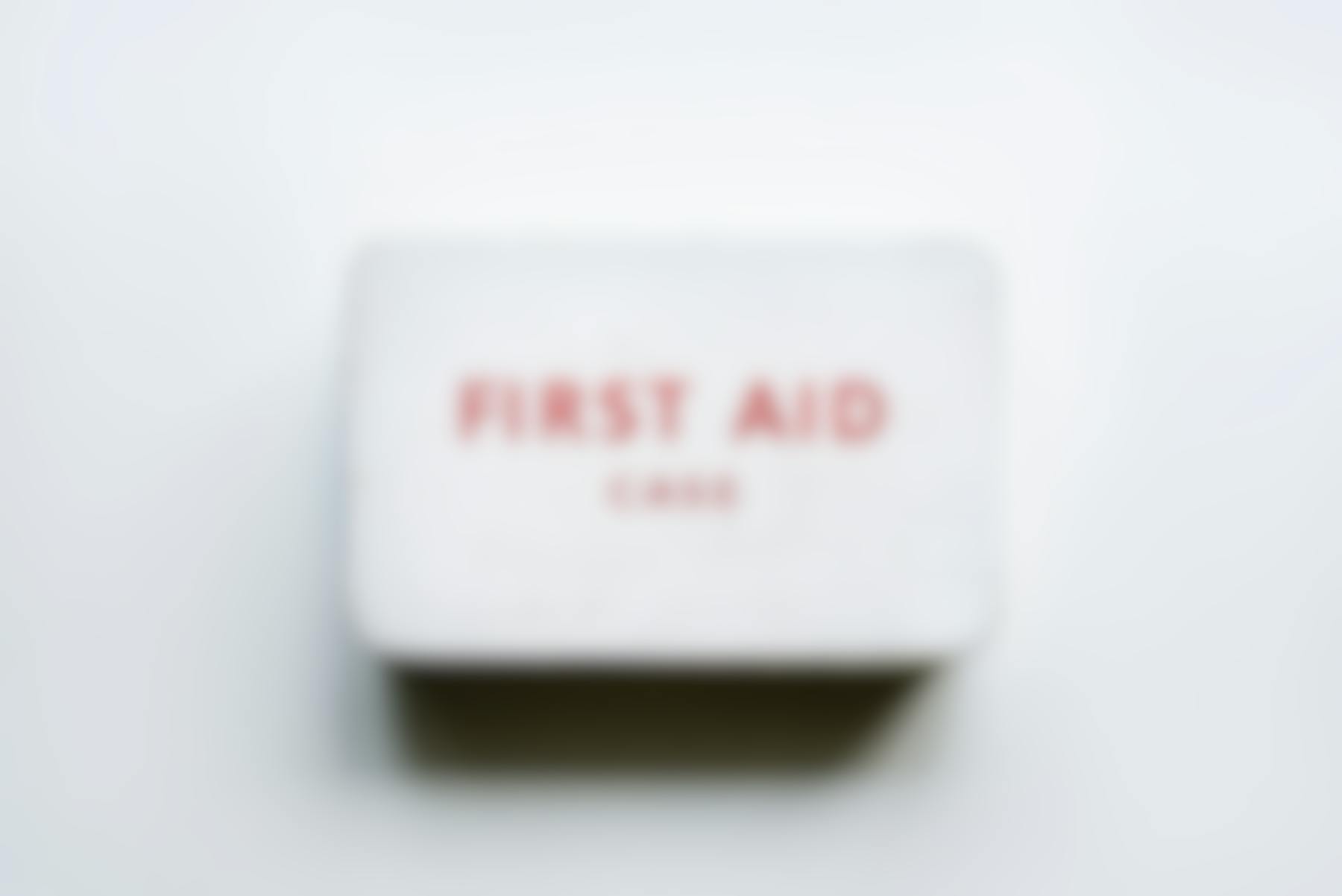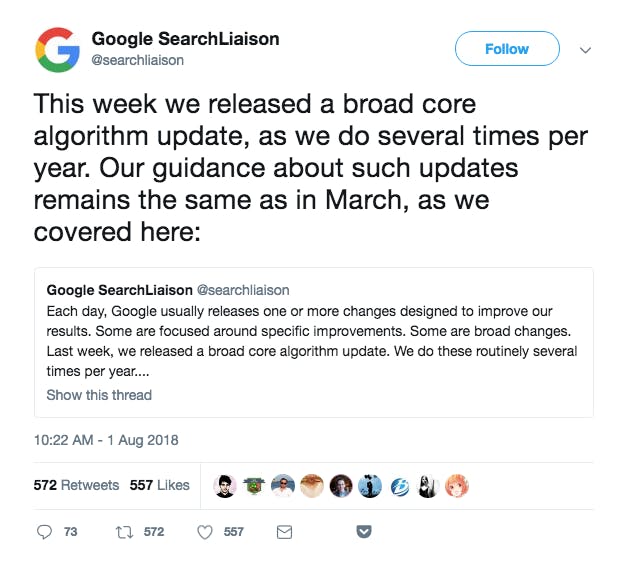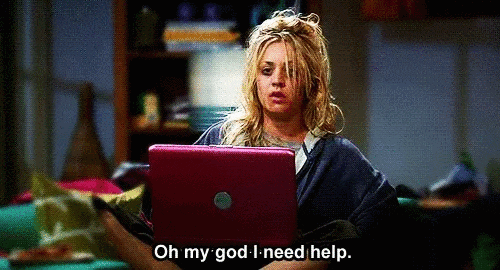
Every once in a blue moon Google shakes up the world of SEO with a core algorithm update - which is exactly what happened with the Medic Update in August.
Every once in a blue moon Google likes to shake things up in the SEO world with a core algorithm update - which is exactly what happened in August. The rollout caused a number of websites to fall in their ranking, leaving SEO wizards like ourselves trying to solve the mystery of exactly which ranking factors were affected.
What Is a Core Algorithm Update?
So Google did a thing and now my ranking is dropping. But what exactly does this mean? Did they press a button? Did Kronk pull the lever? Is the Illuminati behind this? Not Quite.

A “broad core algorithm update” really just means that google made some changes in the main search algorithm itself. Unlike its frequent mini updates throughout the year, these core updates don’t target any specific industries or issues.
Instead it focuses on tweaking the order, importance, weight, and value of those lovely 200 ranking factors and signals that we all hear so much about. All in an effort to continuously improve the quality and relevancy of its search results.
Who Did This Update Affect?
This particular update has been dubbed “the medic update” due to its heavy impact on sites in the health industry. However, that’s not to say that companies outside of the industry weren’t impacted as well. Google has stated that this was a “global update” meaning that every niche could have been affected in the rollout. So essentially businesses anywhere from the e-commerce to insurance industries may have seen a drop in their ranking.
What Does Google Have To Say About It?


What Was Affected and How Do I fix It?
In the ideal world you would be working endlessly to improve on all 200 search ranking factors for all of eternity, but as with any update there are multiple commonalities between affected websites that have been pointed out by the SEO community.

Here’s what researchers have found so far:
Content Length
Have you ever googled a simple question and gotten a five page essay explaining something that could have easily been done in one sentence?
Yeah. We’ve all been there.
There is a strong correlation between content length relative to other related ranking content. In other words: Your content should roughly match the length and depth of all other ranking content for any given query. For example, if all the answers to the search query “How tall is the empire state building?” are short, sweet, and to the point, then yours should follow suit.
Content Quality
It should come as no surprise that all of your content should be quality content. It should also come as no surprise that having top-tier content is something that Google loves to reward. While deciphering what makes content “quality” is a tad bit subjective, there are still some general rules of thumb to follow:
- Expertly written. No, your dog with a blog does not count
- Full of visuals. Photos, GIFS, videos, memes - you name it
- Structured content. Headers, bullet points, proper spacing
- Outbound links to relevant quality sources
Mobile Experience
There’s nothing quite like trying to navigate a fully botched webpage on your mobile phone. With the use of mobile phones constantly on the rise, it’s only natural that Google is rewarding those with well designed mobile sites and penalizing those that could use some work.
If you’re not sure whether your site is passable on mobile experience, you can use Google’s Mobile Friendly Test to see how you fare. There are a number of factors that go into designing a killer mobile experience, but some initial things to note are:
Touch Target Size
- A good rule of thumb is to design for the fat finger. Users should be able to easily click a button without having to zoom in or use their pinky.
Content Format
- A font size that can be read without a magnifying glass, proper spacing and margins, text and photos that don’t cut off mid page.
Simple Navigation
- Keep your menus short and sweet, your CTA’s front and center, your homepage easy to get back to, and avoid the use of pop-ups.
Page Speed
- Your page performs well with wifi access, but how does it stack up on a mobile data network? You can use Google’s Test Your Mobile Speed Tool to see what areas you can improve on to get your speed up to date.
Ad experience
One of the greatest things of the modern day is the ability to block ads from popping up on your browser. Click that off, and the internet can become a scary place.
Excessive use of advertisements, deceptive advertisements, autoplay video advertisements, and pushing content below the fold are all sins committed by sites with ranking drops. This isn’t to say that you can’t have advertisements on your webpage. Just make sure that they’re easy to identify, used modestly, and don’t over power your sites original content.
Design
Can Google actually determine the well designed sites from the bad? As much as we would like to think that they can filter through websites based off spectacular user friendly design, it’s a bit of a stretch. However, that’s not to say that there isn’t a correlation between a well designed site and a proper ranking.
Having a well designed site is a strong indicator that a brand also invests their efforts into other factors that will help their site ranks such as quality content, meticulous SEO work, and consistent outreach. Here are two important elements of many to keep in mind:
More text, less images
- Sure videos and flashy graphics look great, but keep in mind that images, flash files, and Java applets are ignored by search engines. All of your most important information should come in the form of text. Don’t believe us? Take it from google themselves: “Try to use text instead of images to display important names, content, or links. The Google crawler doesn’t recognize text contained in images. If you must use images for textual content, consider using the ALT attribute to include a few words of descriptive text.”
Optimized images
- Obviously we’re not saying images are forbidden, that would be whack. Any and all images on your site should use the alt-image meta tag to vividly describe your image elements and help Google understand what’s inside of the image. Also make it a habit to use descriptive names on your images versus generic ones. For example: google-medic-update-post.jpg vs. IMG00241.jpg.
Inbound Link Trust
Links, links, links! It’s no secret that links are uber important in SEO. Whether it be links to your content, or in this case backlinks, they have continuously named one of the most important ranking factors.
With this latest update, it appears that sites who were a part of a “network” of people that continuously linked back to each other, but didn’t get many links from high TrustRank sites, took a hit. So it’s safe to say that google is looking for the quality of backlinks your site has opposed to the the quantity. This can be done by:
- Creating quality content that is easy to digest and share
- The art of link building
How Do I Prepare For The Next Update?
We don’t have a crystal ball by any means, so there’s really no specific way that you can prepare. Our best advice to you is that if you were hit by this latest update - work on recovering and then take a peek at that beast of a 200 ranking factors list and start working your way through those as well!

